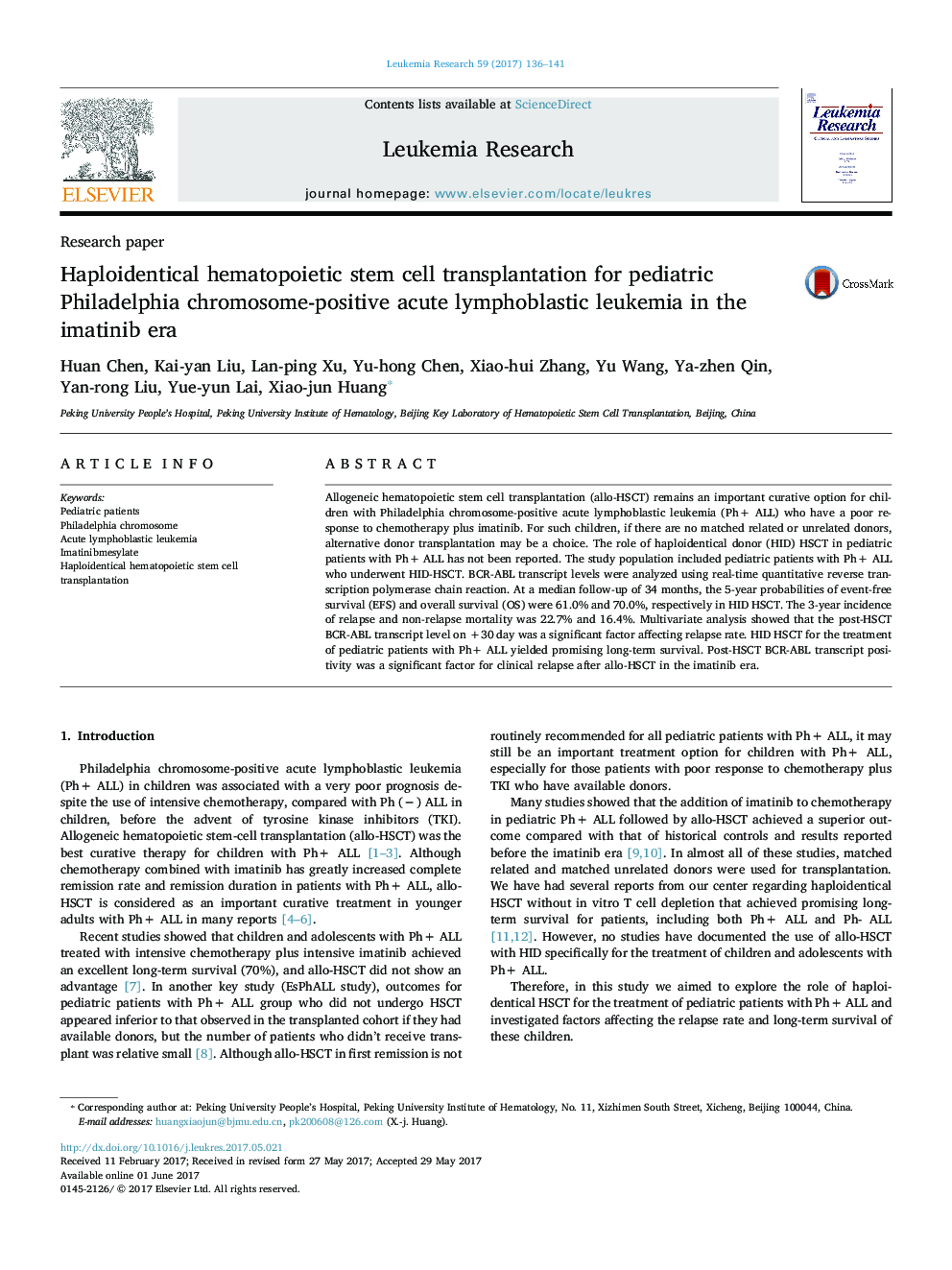| Article ID | Journal | Published Year | Pages | File Type |
|---|---|---|---|---|
| 5527746 | Leukemia Research | 2017 | 6 Pages |
â¢Allo-HSCT remains an important curative option for children with Ph+ ALL.â¢The role of HID HSCT in pediatric patients with Ph+ ALL has not been reported.â¢The 5-year EFS and OS were 61.0% and 70.0% in HID HSCT for children with Ph+ ALL.â¢The 3-year incidence of relapse and non-relapse mortality were 22.7% and 16.4%.â¢BCR-ABL positivity on +30 day post-HSCT was a significant factor for relapse.
Allogeneic hematopoietic stem cell transplantation (allo-HSCT) remains an important curative option for children with Philadelphia chromosome-positive acute lymphoblastic leukemia (Ph+ ALL) who have a poor response to chemotherapy plus imatinib. For such children, if there are no matched related or unrelated donors, alternative donor transplantation may be a choice. The role of haploidentical donor (HID) HSCT in pediatric patients with Ph+ ALL has not been reported. The study population included pediatric patients with Ph+ ALL who underwent HID-HSCT. BCR-ABL transcript levels were analyzed using real-time quantitative reverse transcription polymerase chain reaction. At a median follow-up of 34 months, the 5-year probabilities of event-free survival (EFS) and overall survival (OS) were 61.0% and 70.0%, respectively in HID HSCT. The 3-year incidence of relapse and non-relapse mortality was 22.7% and 16.4%. Multivariate analysis showed that the post-HSCT BCR-ABL transcript level on +30Â day was a significant factor affecting relapse rate. HID HSCT for the treatment of pediatric patients with Ph+ ALL yielded promising long-term survival. Post-HSCT BCR-ABL transcript positivity was a significant factor for clinical relapse after allo-HSCT in the imatinib era.
